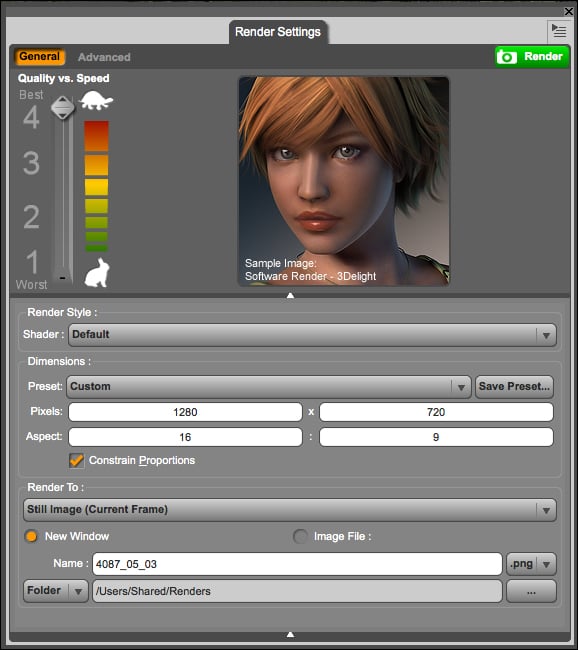
If it gets to two hours but has only done 2000 iterations or samples, it will still quit.

Important take-away: Iray will quit when it gets to ONE of these two values, normally. The default value is 7200, which is two hours. Max Time (secs): Iray can also be told to stop the render when a certain number of seconds have passed. But importantly for now, the more samples Iray calculates, the more it can smooth out the 3D space between the pixels into a continuous image without "jaggies" or "fireflies." More samples make a smoother, more complete image. The process of sampling is how a render engine tries to compensate for working with those pixels and the fact that visual information "stops" between them, creating the visual artifacts that you probably associate with a "bad" Iray render. Longer version, as best I was able to learn from web research: In any kind of rendering, the engine is trying to depict a 3D image as though it were in real space in real space your eye views all images as continuous, but in the rendered image, the image has to be broken up into a finite number of pixels. How long it takes to get to 5000 samples varies by what kind of hardware your computer has - it will get to 5000 much faster on an Nvidia graphics card than a CPU or an AMD card. Max Samples: Short version: The Max Samples count is the maximum number of samples Iray will achieve before it stops the render. The progressive render settings are found in the "Render Settings" tab in DAZ Studio and the "Editor" portion of that tab.

I did not know some of this myself until I had a chance to ask this weekend! Here's some clarification on those settings. This weekend I got a chance to talk to the DAZ 3D developers about the progressive render settings and what they do.


 0 kommentar(er)
0 kommentar(er)
